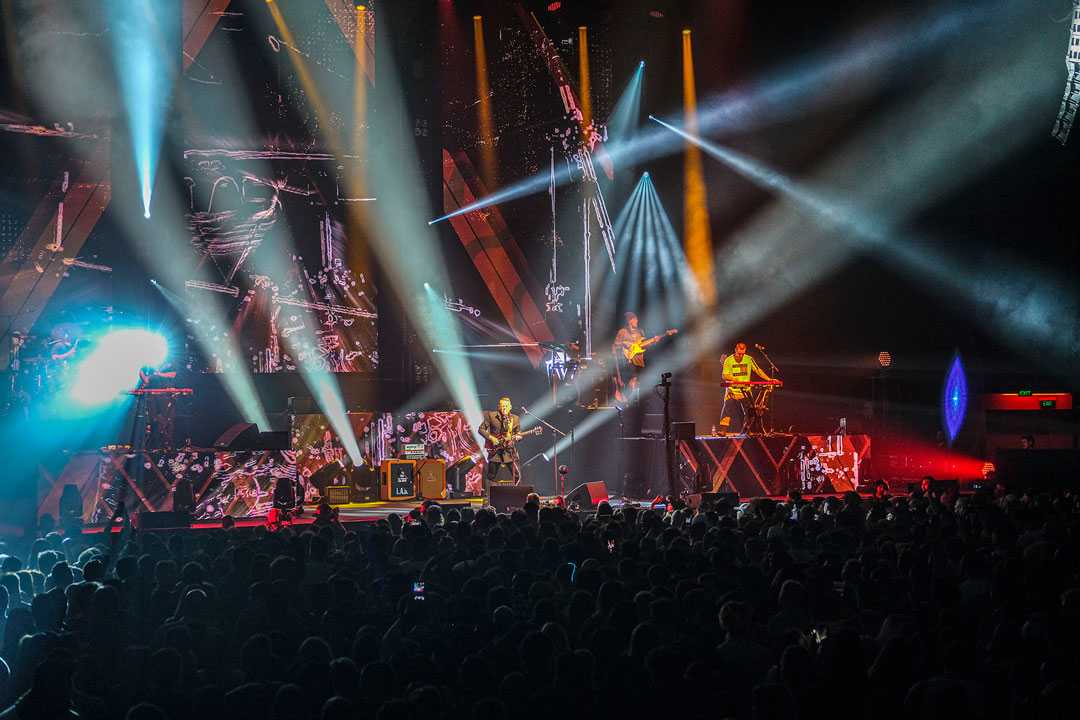Robe lights Auckland arena concert in post-lockdown return
- Details

Robe moving lights were on the rig in a production design created by lighting designer Jack Hooper - his first gig for the band - together with the artists, their management team Loop, visual director Olivier Jean and live video specialist Big Picture.
This event was enabled by New Zealand’s effective coronavirus response which saw a nationwide end to lockdown in early June and social distancing relaxed, with a return to the prospect of live shows and events.
All that changed on 11 August when new cases were recorded for the first time in 102 days, a sign of just how volatile the situation is. Auckland was immediately returned to lockdown.
In the intervening period however, this concert, promoted by Loop, was also L.A.B.’s largest gig to date.
Originally planned for another famous gig in the city - Auckland Town Hall - the demand for tickets was so insane that they shifted to the larger venue. This also effortlessly sold out and was packed with a diverse and wildly enthusiastic audience of 6,000.
“We wanted to make NZ feel good about the world's first arena show post lockdown, blow the budget and make a statement,” declared manager Michael ‘Mikee’ Tucker of Loop.
Oceania was the lighting rental supplier. Jack worked with them for four years before launching his freelance career at the end of 2019, and that’s where he first started working with Robe products.
Being familiar with the brand, he specified 22 x Robe BMFL Spots and eight BMFL Blades as the core fixtures of the design, which he extrapolated at short notice from a version being developed for arena shows being planned for later in the year.
Jack positioned his BMFLs on three overhead trusses - Blades on the front for key lighting - Spots on the back for effects, with another six BMFL Spots on the floor behind the band for powerful aerials and blast-through looks.
“The brightness is phenomenal, the gobos are great, and the features are super flexible,” he commented, “I can do so much with these fixtures.”
All lighting was programmed and operated by Jack using a grandMA2 full size console.
Jack drew everything up in Capture beforehand, working closely with Oliver. For the show visuals, a disguise d3 media server sat at the heart of the system which also allowed everything to be previewed and sequenced in advance in the studio – again saving vital time on site, and scheduling enough of this precious commodity to streamline the live Notch FX integration.
Additional visual effects elements came from content programmed on a Resolume Arena media server.
Tim Budgen joined the visual team VJ’ing and playing in additional media from Resolume while Olivier concentrated on running the d3 and Notch elements. Special content for this show was created by Olivier, Tim and Delainy Kennedy.
Notch was used to heavily to stylize the IMAG & live camera mix.
All seven cameras – three stationed at FOH, two on stage plus two PTZ robo-cams - were mixed live by camera director Wendy A'Bear, they had the latitude to either use live cut PGM outputs or directly process and display multiple cameras simultaneously.
An L-Acoustics sound system was supplied by College Hill Productions, and L.A.B’s audio was engineered by Richie Allen at FOH and Charlie Rodgers on monitors.
















